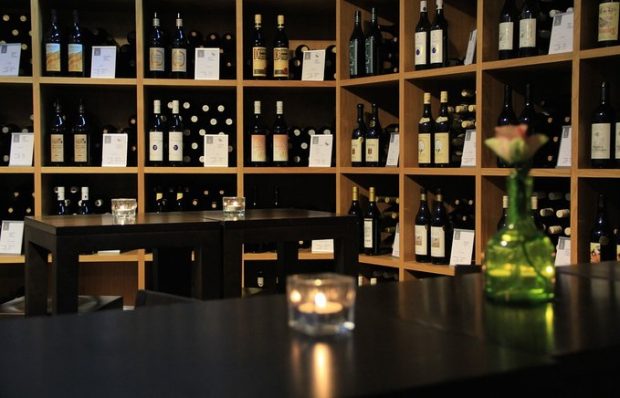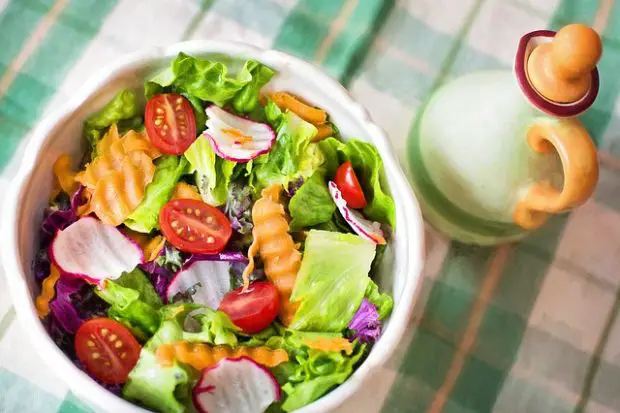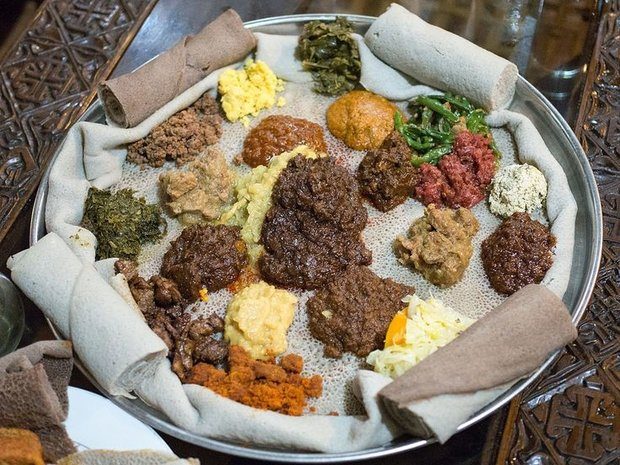Aperitifs in France are a revered tradition! Let’s explore a list of the most common (and easy-to-prepare) French appetizers.
Start our journey with this fun infographic:
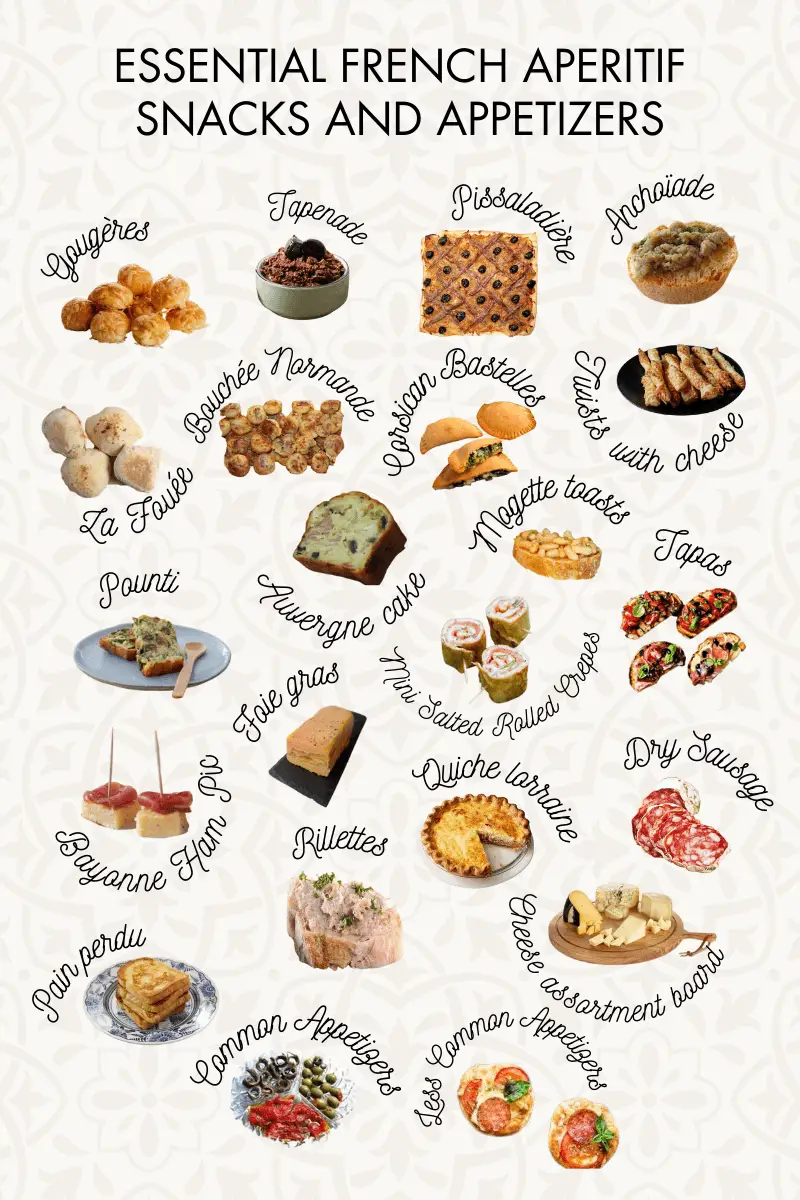
Gougères
From: BURGUNDY – FRANCHE COMTE
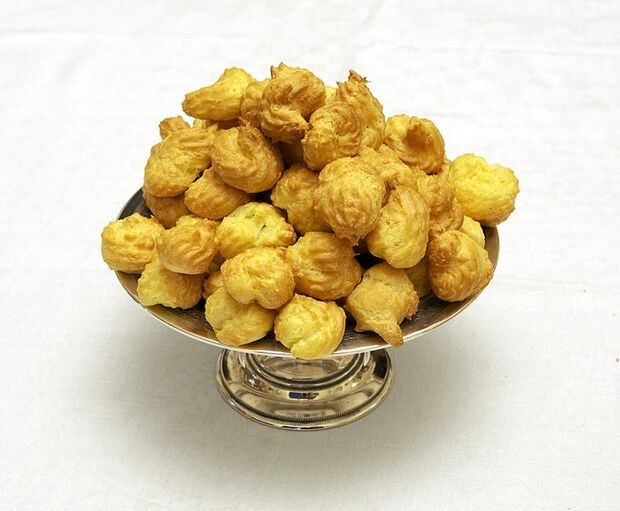
It is a salty and traditional Burgundy recipe based on cabbage dough and grated cheese.
Gougères were registered for the first time in 1571 in Sens.
With its crunchy crust and its soft heart, it is ideal for the aperitif.
They can be made in all sizes, you can have them hot or cold and they are even better when shared.
Remember that the gougères can be declined endlessly. So, add up your ingredients at the end of the recipe and voilà!
Tapenade
From: PROVENCE – ALPES – AZUR
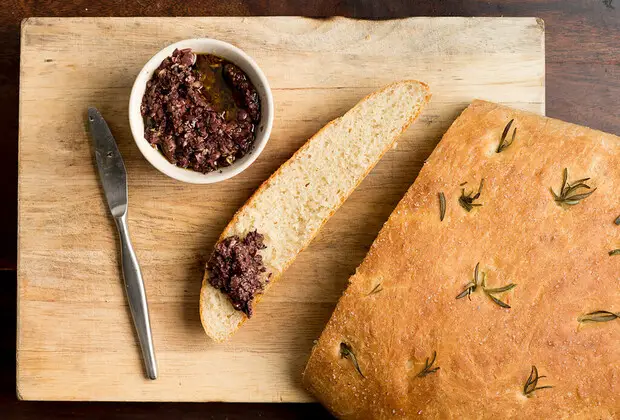
Tapenade is an emblematic recipe of Provençal cuisine.
Invented in 1880 by chef Meynier of the restaurant La Maison Dorée in Marseille, the traditional recipe consists of black olives, capers, anchovies, olive oil and aromatic herbs.
The name “Tapenade” comes from the Provençal word “Tapen,” which means capers.
The best way to have Tapenade is obviously to spread it on toast as an aperitif!
Important to know: the trade name “Tapenade” can only be used if the recipe respects a specific composition, in a given proportion.
Pissaladière
From: PROVENCE – ALPES – CÔTE D’AZUR
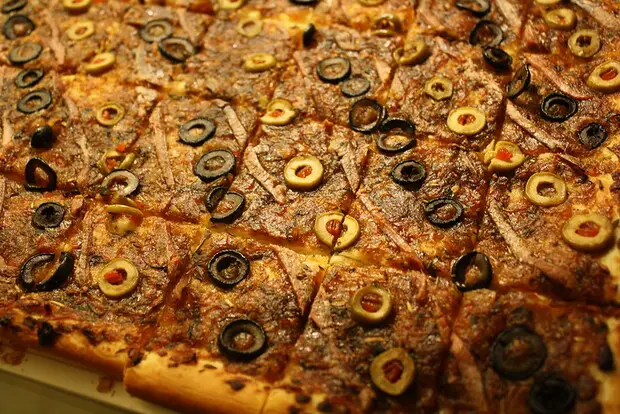
It is one of the oldest culinary specialties in the southern regions of France.
Originally from Nice, the Pissaladière is made from a bread dough, topped with onions, black olives, anchovies and olive oil. It is generally served warm and cut into square pieces but it can also be eaten cold!
It should be accompanied by fresh wine, preferably a Côtes-de-Provence or a Bellet.
The name pissaladière comes from the word “pissalat” which is a kind of salted fish puree that used to be spread on the dough before putting it in the oven.
Anchoïade
From: PROVENCE – ALPES – CÔTE D’AZUR
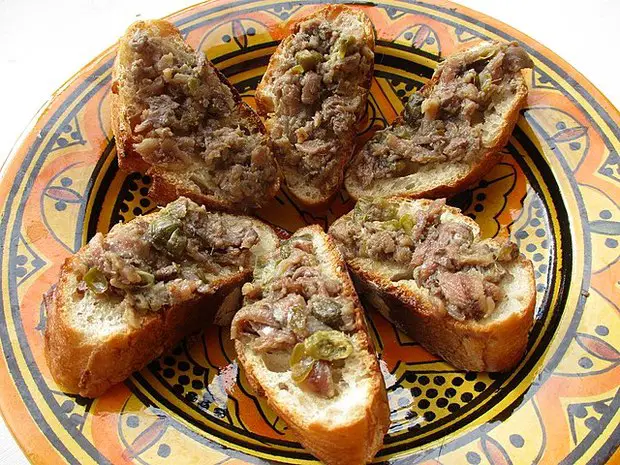
The Anchoïade is a typical Provençal recipe, obviously composed of anchovies as well as olive oil, crushed garlic and some might even add capers to it.
It is a variation of the tapenade, also from Provence.
It is to be enjoyed on a good slice of fresh bread or as an Occitan fondue where you dip raw vegetables into it.
In France, anchovies have been used since the Middle Ages, it is probably at that time that the anchoïade itself was created. Anchovies provide a great source of omega-3 in addition to other vitamins and minerals essential to the body.
Fouée
From: CENTER – VAL DE LOIRE
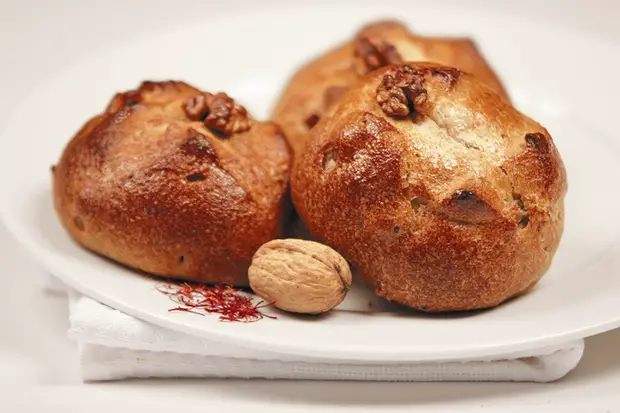
The Fouée is a piece of bread dough that bakers used to toss in the oven to check its temperature, just like with the Fougasse in Provence.
The origin of this recipe dates back to the end of the Middle Ages, in the 16th century.
It’s as easy as a pie, make small balls of bread dough then garnish them with Sainte-Maure (a typical goat cheese of the region) or with rillettes de Tours!
They are perfect for an aperitif and will go particularly well with a Sancerre wine.
Bouchées Normandes
From: NORMANDY
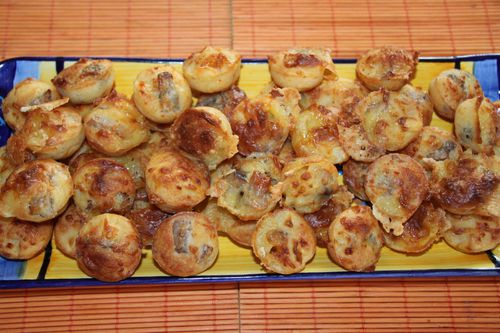
The mixture of the famous Andouille de Vire and Pont L’Evêque cheese will transport you directly to Normandy.
Resulting from an ancestral know-how, the Andouille de Vire was born a long time ago.
It officially entered the diet customs in the 18th century.
Easy and quick to make, these little Bouchées Normandes are ideal for an aperitif!
The Andouille de Vire goes particularly well with Pont L’Evêque cheese, which makes it a quite popular and appreciated dish by Normans.
Corsican Bastelles
From: CORSICA
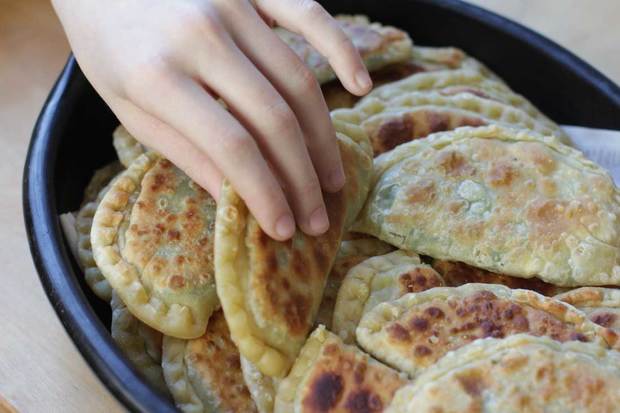
It is a very very old Corsican recipe and often a well-kept family secret.
Corsican Bastelles are pies, which are mostly stuffed with chard, onions or squash, and according to connoisseurs, the Holy Grail of the Bastelles are those with chard and brocciu (a Corsican cheese).
Whether you cook them or you warm them up just before serving, they will make a nice alternative for an aperitif with the flavor of yesteryear.
Twists with Maroilles
From: HAUT-DE-FRANCE
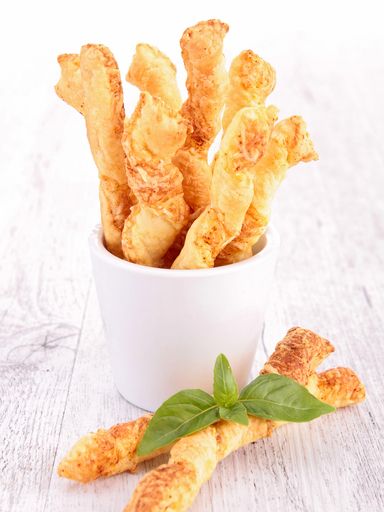
What could be more typical of Hauts-de-France than Maroilles?
Maroilles is a certain type of cheese that is recognizable thanks to its strong smell. It is named after the northern region where it was created. In the Middle Ages, it was called “La Merveille de Maroilles” which literally means “the Maroilles wonder”.
You only need 2 ingredients to perfectly make this appetizer: puff pastry and Maroilles cheese.
Remember to remove the rind from the cheese, the taste might be too strong for some of your guests.
You can obviously add other flavors such as sesame or chia seeds or even mix the cheeses if you feel like it!
Auvergne cake
From: AUVERGNE – RHÔNE ALPES
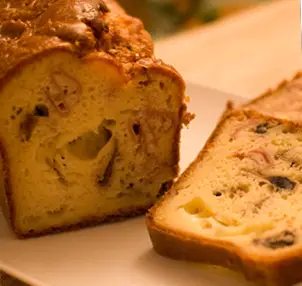
There is no exact recipe for this Auvergne cake.
The important thing is that the ingredients must all come from the Auvergne region and must feature cheese, ham and mushrooms.
You could use Tomme d’Auvergne or Cantal or Saint-Nectaire as cheese.
Once it is ready, cut it into small cubes, there is nothing better than enjoying a good salted savory cake for aperitif.
It is quick to make, can be enjoyed hot or cold, and is easy to enjoy!
In addition, it is budget-friendly.
Pounti
From: AUVERGNE – RHÔNE ALPES and OCCITANIE
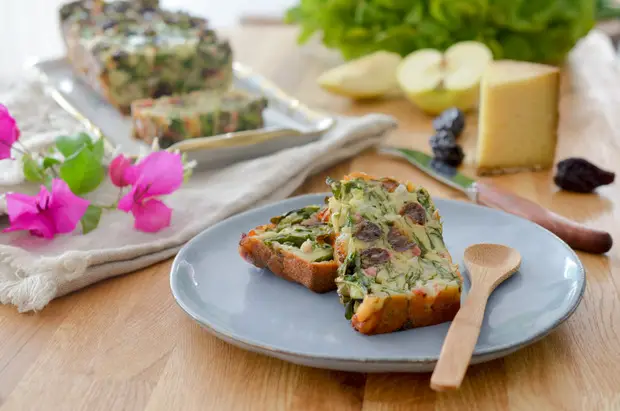
Pounti is a very old typical Auvergne recipe that is cooked in the Massif Central, mainly in the Aveyron and Cantal regions to be precise.
The Pounti is a kind of terrine or savory/sweet flan made from chard, prunes and pork.
Mogette Toasts
Origin: PAYS DE LA LOIRE
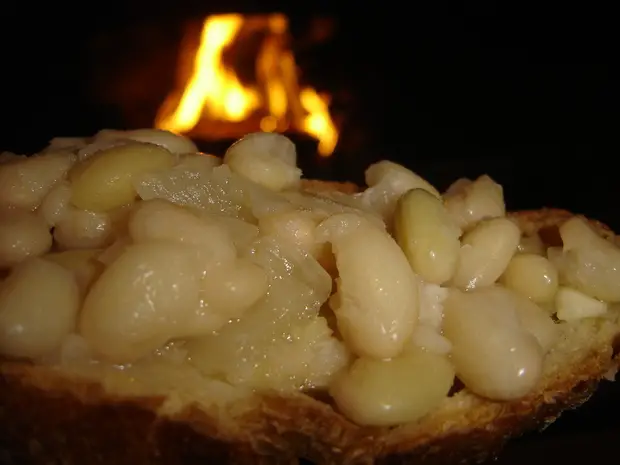
The mogette toasts belong to the culinary heritage of Vendée.
They are toasted bread slices rubbed with a clove of garlic and brushed with olive oil and then covered with a layer of crushed hot mogettes.
The mogettes are a kind of big, white, coconut-like bean cultivated in the lower Vendee countryside. They can be found on all dining tables of Vendée even if they are less consumed today than they used to be.
Mini Salted Rolled Crepes
From: BRITTANY
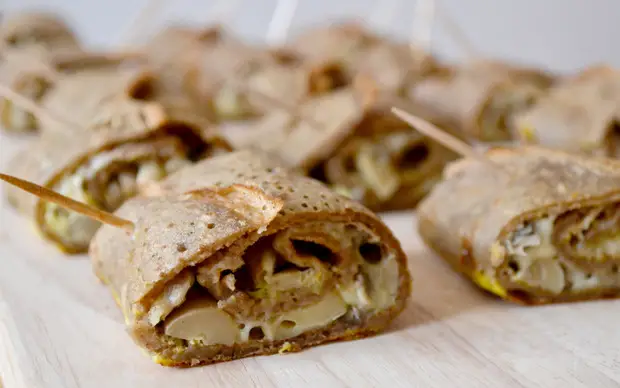
Salted pancake is a typical Breton dish that we love to make our own.
It is easy, cheap, quick to make, and everyone can enjoy it.
The crepe bretonne was born in the 13th century when buckwheat, also called black wheat, was imported in Brittany after the Crusades in Asia.
Few may know it actually, but authentic crepe bretonne are always made with buckwheat flour.
For this aperitif, make your crepes, roll them up, cut them into slices and then prick them!
The presentation is easy and as a small bonus, it is gluten-free!
Tapas of the South-West
From : NEW – AQUITAINE
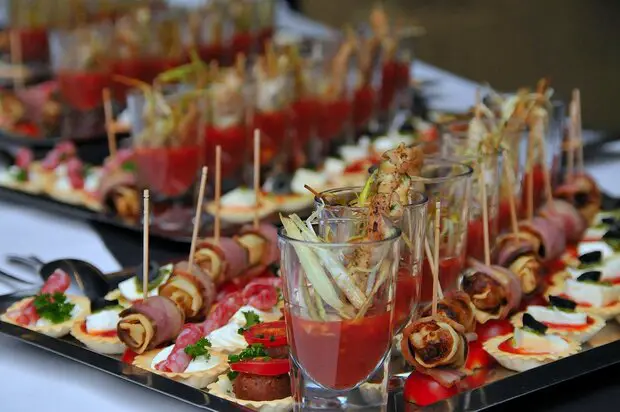
- Tapas with Agen prunes and Bayonne ham
- Smoked duck tapas
- Skewers of chorizo with tomatoes
- Tapas peppers with tomatoes
- And many other tastes and flavors
Bayonne Ham Pic
From: NEW – AQUITAINE
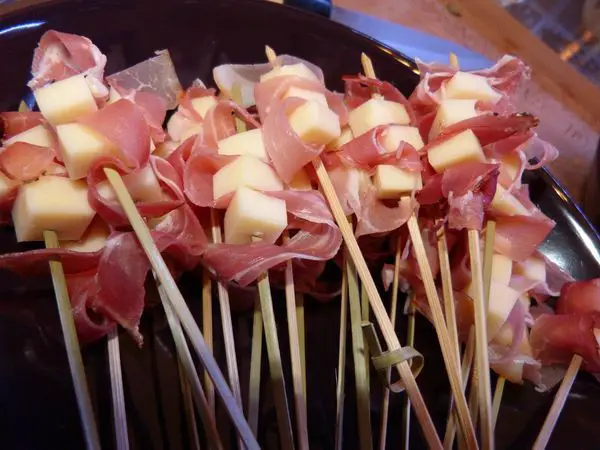
Prick a slice of rolled Bayonne ham and that’s it.
It is a classic that is to be found on the south-west of France tables and given that Bayonne ham can never be missed out!
Many alternatives are possible, you can find some with inserts of cheese, melon, fig and many others.
Bayonne ham appeared in the 12th century yet it was not until the 17th century that it was given its credentials.
Foie gras
From: NEW – AQUITAINE and GRAND – EST
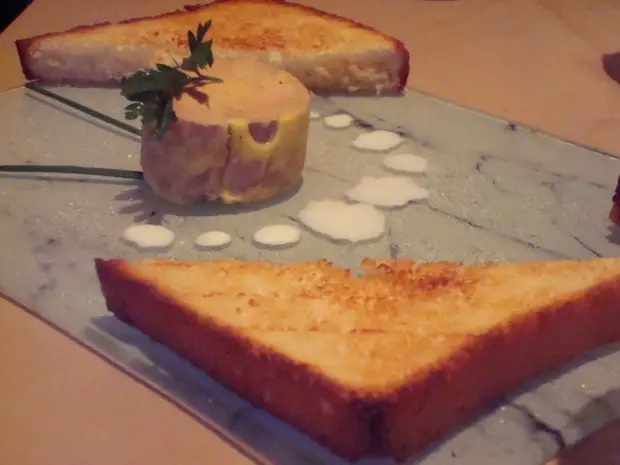
Who does not know Foie Gras?
Our piece of advice: take it out of the fridge a few minutes before serving it so that it is at its best temperature.
You can serve it whole or cut into thin slices, it is often enjoyed on small round slices of rustic bread or brioche bread.
Try it on a nice slice of gingerbread accompanied by onion or fig confit!
Even if foie gras is a high-end dish (by this, we mean rather expensive) and often served during the end of the year celebrations, the amateurs/connoisseurs will know how to get it all year round.
Surprisingly, the history of foie gras does not begin in France but in ancient Egypt 4,500 years ago!
It was not popular and did not experience its worldwide success until the 20th century.
The South West and Alsace are regions worldwide known for their tradition of high-end Foie Gras.
Quiche Lorraine
From: GRAND EST

Only 4 ingredients are enough for this recipe: puff pastry, eggs, bacon and cream.
This is the epitome of French quiche, simple but sumptuous, it will delight your taste buds.
Officially dating back to the 16th century and obviously originating in the Lorraine region, it is undoubtedly one of the most famous French dishes in the world.
It is a quick and easy recipe to prepare, as it is tasty and a symbol of friendliness.
Quiche Lorraine appeals to many people and is a must for family gatherings!
Dry Sausage (Saucisson)
From: FRANCE
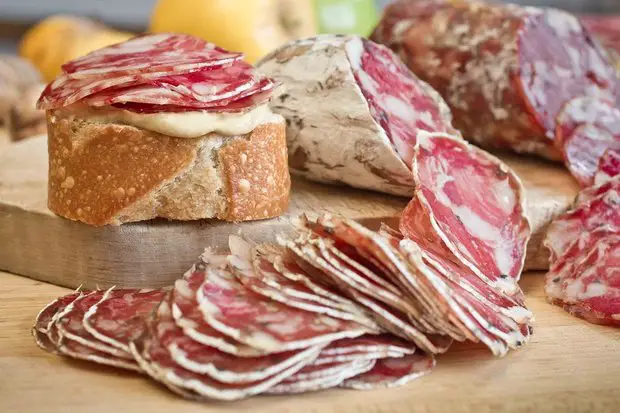
A sausage is a deli consisting of a mince of one or more meats, mainly pork, which is seasoned in many ways according to local, regional or national traditions.
Find down below a draft variety of sausages from all over France:
- Figatellu or Figatelle (Corsican specialty): essentially made of pork liver and is a little spicy
- Grelots (specialties from Savoy): registered trademark of Les Salaisons du Mont Charvin
- Jésus (speciality from Lyon)
- Lukinke (specialty of the Basque Country)
- Rosette (specialty from Lyon): made of the noble parts of pork and fat
- Garlic sausage: a French as well as a Polish classic
- Lacaune sausage (or Monts de Lacaune): dry sausage of dark red color, very lean, it contains however whole fat bacon. (specialty of the south-east of The Tarn)
- Lyon sausage (specialty from Lyon): lean meat is finely chopped and garnished with small cubes of pork fat (meatless bacon). It can also be composed of a quarter of beef
- Smoked sausage (specialty from Lorraine): Lorraine sausage spindle
- Ardennes sausage (specialty from Ardennes): smoked sausage
Rillettes
From: FRANCE
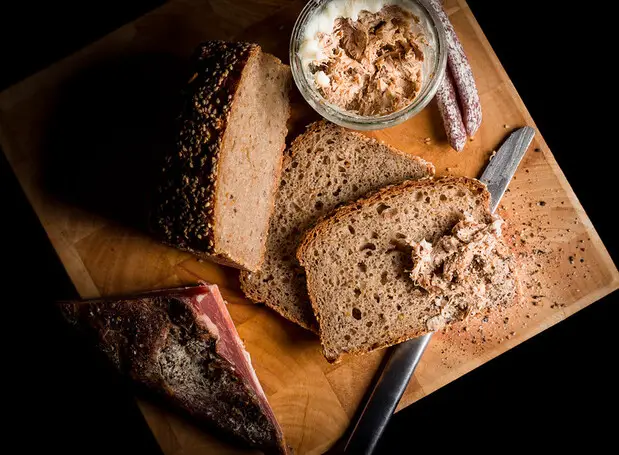
The term rillettes comes from the word “rille”, a dialect form of the old French “reille”, which meant latte, board or ruler.
Rillettes are delicious when spread on a slice of toasted rustic bread for an aperitif.
They were born in the 15th century in Touraine following ancestral rural customs.
- The Rillettes du Mans (From: PAYS DE LA LOIRE)
They are the most famous in France. They are light in color with shades of gray-brown-golden or pink. They consist of lean pieces of pork in cube shape which are browned then slowly cooked in their own fat, at a moderate and constant temperature. Cooking is a minimum of 5 hours. It is rich in meat chunks and fibers.
- The Rillettes de Tours (From: CENTRE – VAL DE LOIRE)
They are dark in color and consist of lean pork cut into strips, cooked in its fat to evaporate for at least 4 hours.
- The Rillettes Comtoises (From: BURGUNDY – FRANCHE – COMTÉ)
They are made with lightly smoked meats.
Cheese assortment board
From: FRANCE
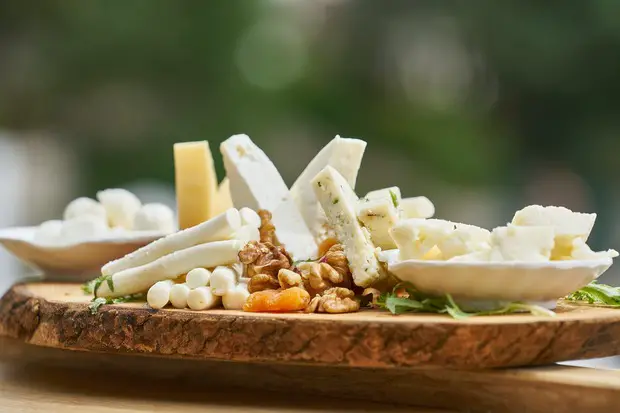
Another classic of the French aperitif that cannot be left out!
The most common cheeses on an assortment of cheeses are Brie, Gruyère, Camembert, Mimolette, Chèvre and Feta accompanied by cherry tomatoes, almonds, grapes, shrimps or even ham or charcuterie.
Everyone can have something to enjoy.
Obviously, the cheeses change depending on the region and since there are more than 1,200 regions in France, the choice range is very wide.
Common Appetizers
From: FRANCE
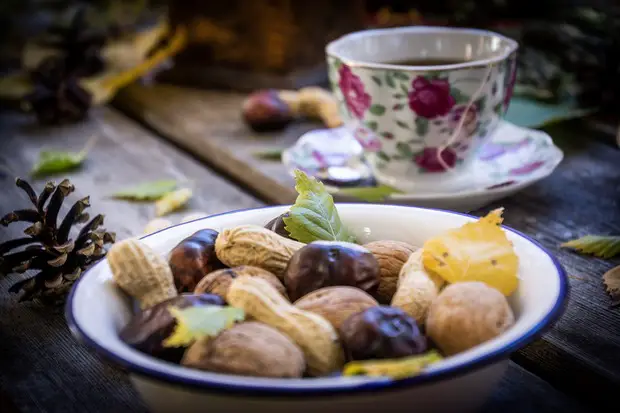
These little appetizers are absolutely everywhere in French bars, cafés and restaurants usually offered as soon as you place your order.
- Olives: often with Provence herbs or spicy.
- Charcuterie: a small set of cold cuts from all over France.
- Cheeses: small cheese cubes of all kinds.
- Peanuts or different kind of peanuts mixture
- Potato chips: vitelotte chips, sweet potato chips…
Less Common Appetizers
From: FRANCE
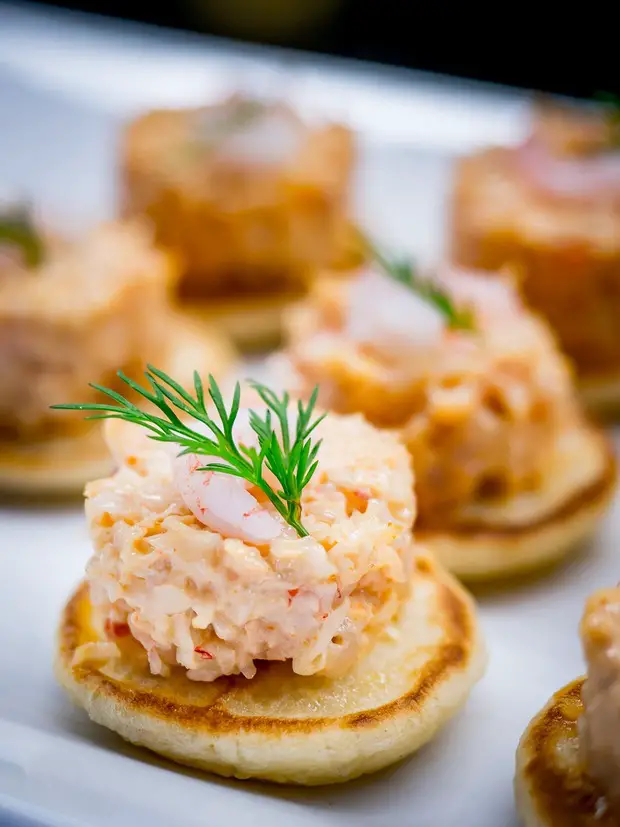

- Blinis: Originating from Russia, blinis are part of the aperitif in France. They look like savory pancakes with holes, you can top blinis with sauces, spreads …
- Mimosa eggs: very easy to make, they are a good compromise for an original aperitif. Having this appetizer is always a good idea for an aperitif.
- Mini-pizzas: cut the pizza of your choice into small pieces, this is a must-have for an aperitif with friends! There is nothing simpler.
- Savory puff pastry: choose your garnish or mix up ingredients by yourself, your guests will surely be happy. Vegetarian or not, the puff pastry is irresistible.
I aim to share my tips and recommendations for the beautiful country of France. My goal is to help you plan your next adventure, whether it’s a weekend getaway or a once-in-a-lifetime trip. From finding the best hotels and restaurants, to discovering unique activities and sights, I’ve got you covered!

